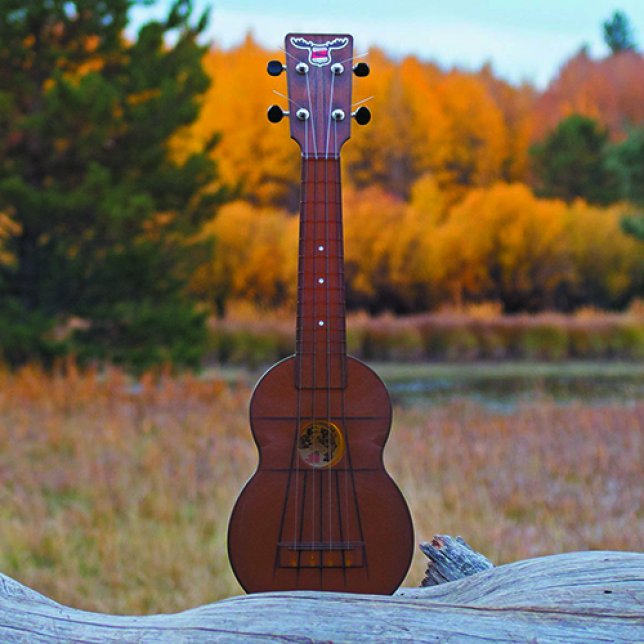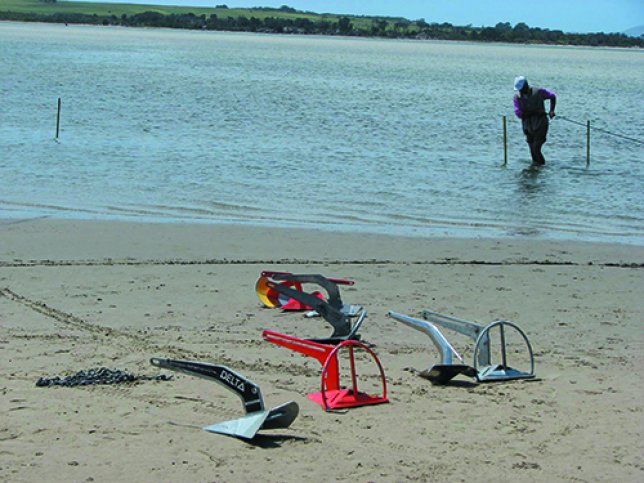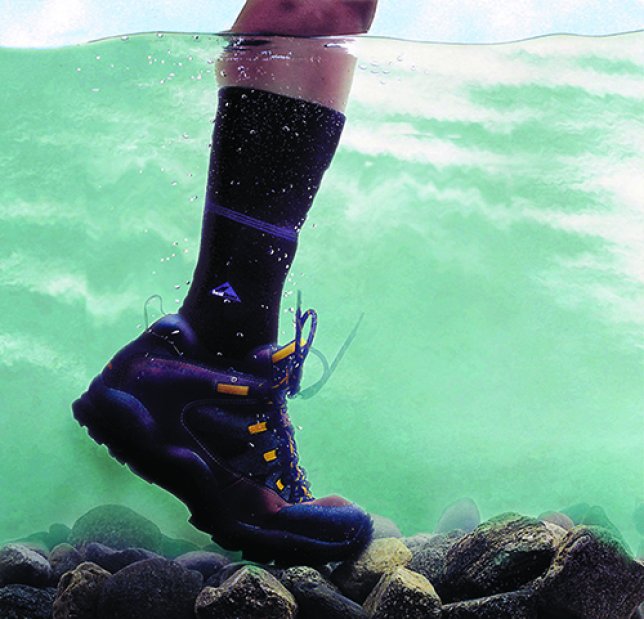KEEL MATERIAL
It would be useful for PS to list which manufacturers use iron encapsulated in their keel. I am surprised to learn that many old sailboats have iron instead of lead as encapsulated ballast.
Edward Addeo
via PS Online
Our boat reviews (www.practical-sailor.com/topics/sailboat_reviews) typically indicate the keel material, as do the manufacturers; well start working on a list. Most new sailboats use lead. Owners groups are a good source of information for older boats, as are builder specs. However, the builder specs for older boats (1970s-80s especially) arent always accurate, so do your homework. A good surveyor can usually determine ballast material.

Carbon Fiber Ukes?
Ukuleles are popular on cruising boats because theyre small, relatively cheap, and fun. Ukes and acoustic guitars, being wood, are subject to both high and low humidity necessitating dehumidifiers and humidifiers, not to mention constant tuning. Outdoor Ukulele makes a carbon fiber tenor uke thats affordable, humidity and bullet proof and sounds really good too! And made in Oregon, not China.
Luman Moody,
West Wind, Westsail 28,
Long Beach, CA
Sticky Sailtrack
Regarding your report on cleaning sail tracks (Sticky Luff Track Cure, PS March 2018) back when I used to do foredeck and mast for racing, I had a system that involved taking a sponge and then clamping it between two metal, wood, or plastic strips about at least an inch wide, the same length as the sponge, and about a 1/4 inch thick or so, about a 1/2 to 3/4 inches from the long edge of the sponge, depending on the thickness of the sponge and the size of the sail track, which causes the edge of the sponge to fan out into about 270 degrees of a circle (you might have to experiment with different types of sponges and thicknesses to get the right effect for your mast track). As a result, theres still enough force for the sponge to get good contact with the inside of the sail track, yet the sponge is soft enough that it can be inserted into and removed from the track easily. Put loops at the top and bottom of the meal clamping plates so you can pull it up and back down the track. Soak the sponge in your lubricant of choice. You have to use much smaller sponges for jib luff tracks, but it may not work given that they are much narrower.
Peter Kacandes
Juonoesque Jones, Islander 36
Berkley, CA
The Balky Bilge Switch
Regarding your recent report on Bilge Pumps (Bilge Pump Basics Keep Your Boat Afloat, PS January 2018), my own experience is that the switch fails more often than the pump. I have heard, but cannot verify, that bilge pumps are supplied with a specific length of wire that should not be shortened. Underwater connections are always undesirable. Some boats have a fitting at the propulsion engine raw water intake that allows using the engine as a bilge pump. One of the these days, installation will get somewhere near the top of my punch list. As they say, the best bilge pump is a scared sailor with a bucket.
Barry Needalman
Island Time, Hunter 41
Boston, MA
Our many previous tests of bilge pumps (search bilge pumps at PS Online) have indicated the vulnerability of wiring, electrical connections, and switches. The connections between float switches and pumps are common weak points, as are the switches themselves. For an in-depth look at high capacity pumps see PS September 2010, Battle of the Electric Bilge Buddies. For our report on bilge pump switches, see PS January 2006, Bilge Binge. If you want to virtually eliminate wiring/switch worries you can look into diaphragm pumps, an option that keeps motors and connections out of the water (see Bilge setup keeps Electrical Bits High and Dry, August 2011). Because diaphragm pumps are vulnerable to wear and tear, maintenance and monitoring is important. It is no surprise that many cruising sailors often carry a spare electrical pump and switch. Our report, Marine Wiring: Are the Pricey Options Worth the Cost? (see PS July 2010), includes a tech tips on making watertight connections, and the Inside Practical Sailor blog post Fighting Off Marine System Electrical Corrosion, includes several links to our past reporting regarding wiring reliability. Finally, if your looking into improving or replacing your boats complete electrical system, our five-volume ebook Marine Electrical Systems, has got you covered.
Cold Weather Clothes
Regarding your recent Inside Practical Sailor blog post, Bracing for Cold and Wet Sailing, Heat 32 underwear is a great for the winter sailing/deliveries. Probably, even, better than hot chilies. Regarding sea boots, I think they a unsafe during ocean passages in MOB situation. These sea boots will pull down like a pair of bricks, and must be dropped immediately in the water. I am using sneakers and SealSkinz waterproof socks. Socks are much warmer, they are waterproof, they do not bring you down like pair of bricks and do not require additional wool socks, just some light socks underneath. This combination of sneakers and waterproof socks is very light and comfortable.
Greg Davydov
Valanta, Hanse 400
Norwalk, CT

Respect for the Spade Anchor
There is no question in my mind that the new generation of anchors: Rocna, Spade, Mantus and others, are far superior to the old generation anchors: CQR, Bruce, Delta etc. Casual observation of the bows of experienced cruisers appears to confirm that the message is out. That said, your comment that roll bar style anchors being synonymous with cruising is neglecting one of the family of new generation anchors, Spade (Collapsible Anchor Prototype Tested, PS July 2019). You compound this distorted view by contending that the roll bar style anchors reliably reset with wind and tide changes. I have had three friends, experienced skippers all, experience their Rocna anchors fail to reset after a wind shift. I also know that the roll bar has occasionally collected bottom debris, also possibly interfering with setting. The Spade, which I have been using for over a decade, has no roll bar nor reports of resetting failures that I am aware of.
Dick Stevenson
Alchemy, Valiant 4,
Newfoundland, Canada

Good point. We should have known better, since we were among the first to point out that roll bar anchors can struggle when making 180-degree reset in some bottoms. Weve changed the wording to reflect the broader results of our recent testing, including comprehensive reset tests (see Anchor Resetting Tests, February 2013). As we pointed out in that report, . . . the biggest surprise was in the 180-degree somersault in the sand/clay seabed. All anchors set well and quickly during the initial pull, but on somersaulting, both the Rocna and [Manson] Supreme retained a clod of seabed in the fluke, dragged upside down, balanced on the embedded shank and the roll bar until the act of dragging dislodged the clod. Once cleaned, the anchor rolled over and engaged as normal.
It should be pointed out that 180-degree test is very challenging for any anchor, and that given the variability of bottoms, no anchor is guaranteed to reliably reset, although some, like the Spade, are more reliable than others.
When the Spade anchor was launched more than 20 years ago, our testing helped introduce this new design to sailors (See PS January 1, 1999, online). In that report we stated: It would appear that Alain Pouiraud, a very serious French engineer, has made a remarkable advance with an anchor.
Pouiraud, the author of the book The Complete Book of Anchoring, died in 2011 before he could fully launch his latest evolution of the Spade, the Raya (no longer available as far as we know). Pouiraud and his supporters have long contended that many of the newer anchors were Spade clones, suggesting that the roll bar was added to avoid patent infringement. Our friends over at Attainable Adventures Cruising Web have posted a series of movies documenting reset issues for Rocna. Wisdom gleaned from 20 years of anchor tests can be found in our four-volume eBook Anchors. The book is available in our online bookstore at www.practical-sailor.com/books.





































